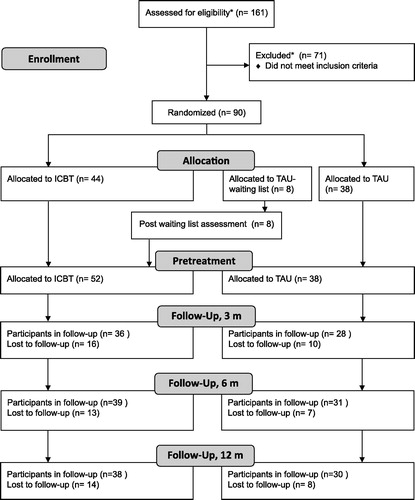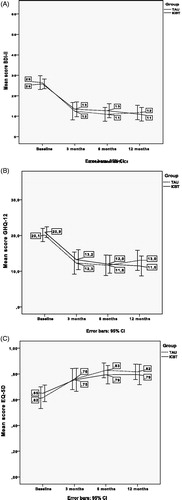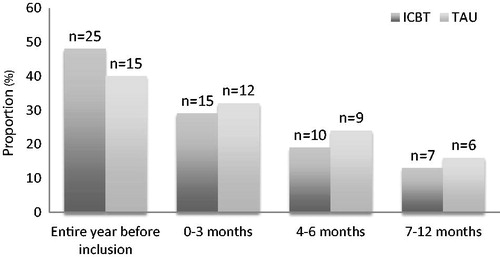Figures & data
Figure 1. Flowchart showing recruitment and dropouts in the PRIM-NET study. Post-waiting list assessment: eight participants, initially randomized to TAU, were included in the intervention arm for recruitment reasons and thus followed up for 12 months after start ICBT. *Uncertain number due to local inconsistencies.

Table 1. Baseline characteristics for the ICBT group and the TAU group, in total, and for men and women, respectively.
Figure 2. Line charts with error bars of (A) Depressive symptoms (BDI-II), (B) Quality of life (EQ5D) and (C) Psychological distress (GHQ-12), with means before and after treatment and at follow-up at 6 and 12 months for TAU and ICBT, respectively.

Table 2. Use of antidepressants and sedatives at baseline, 3, 6 and 12 months for the patients in the ICBT group and the TAU group, respectively.
Figure 3. Proportion (%) and number (n) of patients on sick leave the year before inclusion, during treatment period (0–3 months), and the follow-up periods (4–6 and 7–12 months) in the ICBT group and the TAU group respectively.

Table 3. Numbers of days of sick leave days 0–3 months, 4–6 months and 7–12 months for the group of patients that were on sick leave for the respective stated period.
Table 4. Number of visits to therapists, GPs and nurses, respectively, and telephone calls to therapists and other personnel for patients in ICBT (n = 52) and TAU (n = 38) during 0–3 months in the PRIM-NET study. There was a significant difference in number of visits to therapist between ICBT and TAU (p = 0.001).
